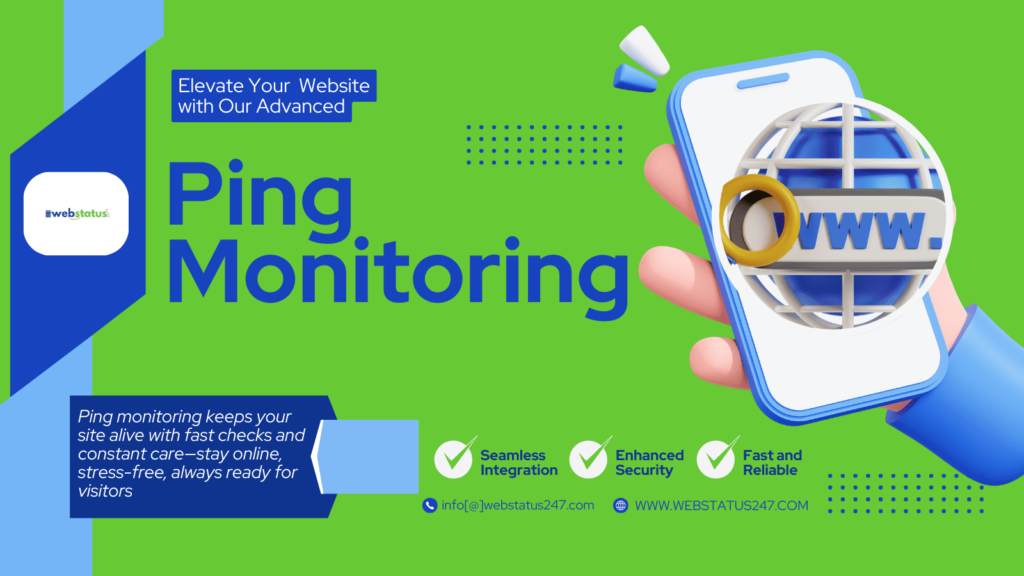Selecting the proper ping monitoring utility is significant when it comes to the good operation of a network system free of errors. Do you know which one suits your specific needs best out of many available? The most efficient ping monitoring services are the ones that provide instant alerts, as well as multi-location monitoring, and offer transparent analytics of the network. The right tool will make system performance and reliability of your business, big or small, remarkably better.
This booklet will be used for the following:
Main characteristics of an ideal ping monitoring solution
A forecast of the most popular tools to be used in the year 2024
Demeaning points for decision making
Expert proposals in different cases
In the end, you should be able to acquire information that will enable you to confidently pick your network while keeping it a stable superpower.
Key Takeaways:
- The ping monitoring solution will provide the users the necessary support, real-time alerting, multi-location monitoring, and guaranteed performance analysis commands.
- Crucial aspects for example which includes the response time tracking, packet loss monitoring, and ICMP echo request capabilities through which you could get a complete network performance analysis.
- Go for the software that can also be used by small teams and corporations with the emphasis on its scalability and interoperability with other solutions.
- Critique the options based on responsiveness of the support team, data analysis craftiness, and integration of the system with the existing network infrastructure of a company.
Understanding Ping Monitoring :
Ping monitoring is a method of checking network resources for their availability and responsiveness using ICMP (Internet Control Message Protocol) echo requests sent out at regular intervals to the target device. It measures round trip times and spots the barriers of issues like delay in the form of latency, packet loss, and connectivity.
How Ping Monitoring Works :
- A ping request is made to a target system.
- The system, in turn, responds with an echo reply.
- The monitoring tool computes the round-trip time.
This process enables the early detection of network faults and thus makes the prompt resolution of disruptions possible.
Key Components of Ping Monitoring:
Response Time Measurement: It keeps the calculation of round-trip time.
Packet Loss Detection: This is the detection of unsuccessful data transmissions.
Latency Analysis: It is the measurement of the delays in data transmission.
Threshold Alerts: It warns when the response time exceeds a certain intended limit.
Benefits of Ping Monitoring
- Ping monitoring provides a lot of advantages, such as:
- Early warning for network issues that can affect users.
- Service continuity that is ensured by simulating network connections continuously.
- Analysis of the performance-related data for a certain time period.
- Rosolved uptime troubles by being proactive surveillance.
- Fully-fledged network well-being monitoring.
Real-World Applications
From mission-critical servers to websites, ping testing offers the organization immediate feedback on the infrastructure and the overall network health.
🤔 Why? Ping monitoring does ensure the best possible performance of a network by continually verifying response, packet loss, and whether devices are connected.
Real-time Alerting System
Instant alerts can be sent via email, SMS, or phone calls. Customizable threshold settings and escalation rules digest the upcoming ones. Allows the use of multiple methods, each specifically targeted at a certain level of severity.
Multi-Location Monitoring
The fact that the tests come from several locations makes it almost impossible to have false positives. Gets the information of reliable availability along with the amplification of the global organizations especially.
What are the differences between ping monitoring and uptime monitoring?
The ping monitoring records the reaction time and the packet losses while the uptime testing confirms whether a system is online. The ping monitoring marks response time and the packet losses, while uptime monitoring is used for system availability check.
For more info follow us on Facebook
How often should I perform a ping monitoring test?
Values of 1-5 minutes are appropriate for most network tests. However, the frequency should be increased for the most significant systems. Run tests every 1-5 minutes for most networks, increasing frequency for critical systems.
Can network performance be affected by ping monitoring tools?
Current ping monitoring tools eat up regions and assets but have zero to minimal impact.
Modern tools are extremely light on the bandwidth and are almost unrecognizable by the network.
What are the general or usual costs for enterprise-level ping monitoring?
Some costs are around $50-$500/month and vary depending on features and endpoints.
How do ICMP tools manage locked devices behind firewalls?
The more advanced tools utilize the ICMP protocol which is responsible for the optimal firewall configuration. More advanced tools utilize the ICMP protocol, which needs proper firewall settings
What period is perfect for holding data in a safe place?
The most successful strategy is to keep historical data for 30-90 days, which allows for a wide range of analysis and trend detection.
